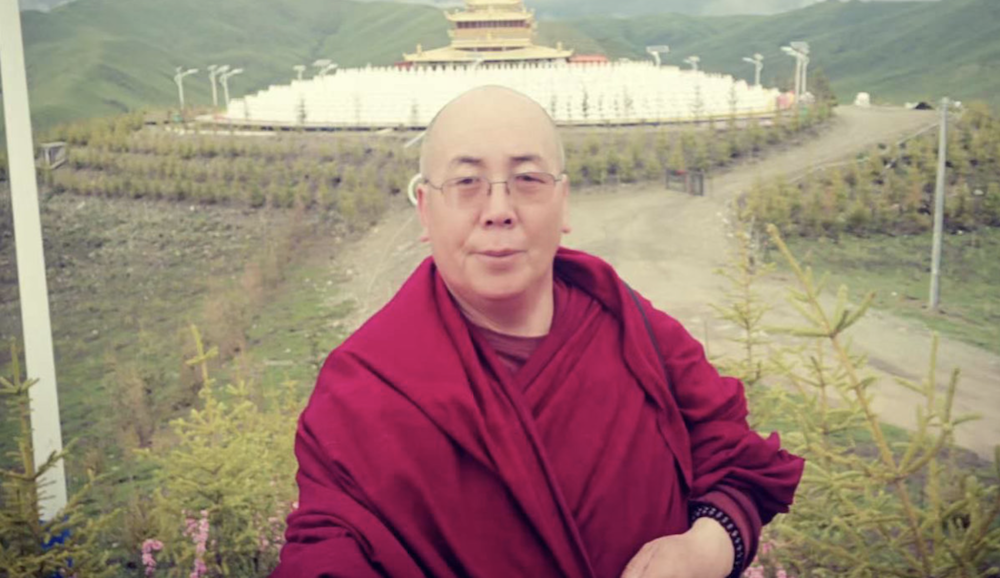Nobel laureate consecrates Buddhist temple in Medford
By Michael Paulson,
Globe Staff
MEDFORD – Just after 11, as the sirens began to wail in the distance, a lone drummer started to tap out the rhythm of a Tibetan welcome.
A group of men, wearing white masks and headdresses, began to perform an ancient Tibetan opera dance, Tashi Shopa, which is supposed to bring good luck to those who see it. Under a high green arch topped with images of a doe and a buck and a dharma wheel, a group of women scattered grains of wheat and barley flour.
As the police motorcycles whizzed by, the black SUVs came to an sudden halt and out stepped the 14th Dalai Lama, the latest reincarnation of the Buddha of Compassion, a Nobel Peace Prize laureate. His name, Jetsun Jamphel Ngawang Lobsang Yeshe Tenzin Gyatso, means Holy Lord, Gentle Glory, Compassionate, Defender of the Faith, Ocean of Wisdom.
Magoun Avenue in East Medford had never seen anything quite like this.
The Dalai Lama, the spiritual leader of Tibetan Buddhists and the political leader of the Tibetan government-in-exile, chose this working-class suburb to begin a four-day visit to Boston because the local Buddhist temple is headed by one of his disciples, a Tibetan monk named Geshe Tsulga. The Dalai Lama’s Boston swing is part of a three-week US tour.
In Medford, Tibetan prayer flags representing the five elements were hung along the sidewalks, and over the street were banners bearing greetings in Tibetan and English. The street pavement was decorated with eight chalk pictographs of auspicious Tibetan symbols, including a white conch, an umbrella, a wheel, and a lotus flower. Hundreds of people waved Tibetan and US flags and held sticks of incense whose pungent aroma wafted down the street. Some in the crowd shuddered, others cried, and many bowed and clasped their hands as the small bald man in the saffron and red robes greeted and blessed the fortunate few who were closest to the police barricades.
Diane M. DiNunzio, 43, stood on her front lawn with a videocamera so she could send her husband, who is serving with the American military in Iraq, a record of the unusual goings-on. Across her street is the yellow house that had been a nursing home until three years ago, when a group of local Buddhists bought it and converted it into a temple.
”This is not something you’d ever expect in a lifetime, to have in your own neighborhood,” she said.
Tenzin Thangpey of Cambridge, a 19-year-old student at Becker College in Worcester who was born in Tibet and fled to India at age 2, arrived in Medford hours early to secure a spot directly in front of the Kurukulla Center for Tibetan Buddhist Studies.
”He’s like a god — I don’t think there’s anyone beyond him,” Thangpey said.
The consecration of the Kurukulla Center was one of three quasi-public events on the Dalai Lama’s schedule yesterday. He also held a news conference at the Charles Hotel, where he spoke about how much science and Buddhism have to learn from one another, and he met with Boston’s Tibetan community, which has an estimated population of 400, at Harvard’s Memorial Church.
Today and tomorrow he is to participate in a conference at Massachusetts Institute of Technology where Buddhists and scientists will explore how they might collaborate on new brain research. Tomorrow night the Dalai Lama gives a public talk at the FleetCenter, and Monday he plans to spend the day at Harvard before departing for New York on Tuesday.
During his visit to the Kurukulla Center, the Dalai Lama consecrated the temple and offered a brief teaching to about 75 temple members seated on prayer mats and wearing white Tibetan scarves called katas.
As he entered the meditation room, called a gompa, the Dalai Lama made reverence to holy objects along the altar, prostrating himself before statues of Buddha, before ascending onto a throne. He listened to the assembly chant in English, joined them in Tibetan prayer, and sampled the ceremony’s sweet rice and salty butter tea.
The Dalai Lama accepted several offerings, holding them up to his forehead: a mandala, which is a design of the universe, as well as a Buddhist scriptural text representing speech, a statue of the Buddha, representing the body, and a stupa, which is a Buddhist reliquary, representing the mind. At the end of the ceremony, he scattered rice around the room.
”As you know, I always emphasize that it is better to keep one’s own tradition, and American is basically a Judeo-Christian tradition,” the Dalai Lama told the assembly, which was made up mostly of Americans who were not raised Buddhist. ”The person who changes religion starts to create more confusion, and therefore it is safer to follow one’s own tradition.”
But the Dalai Lama acknowledged that many people eventually become dissatisfied with the religion of their parents, finding ”that one’s own tradition is no longer effective.”
He marveled at the group in Medford reading Tibetan prayers, and, after making a joke about forced conversions, said, ”since you have developed an interest in Buddhism,” he would offer a brief Buddhist teaching.
He told the group that more important than ritual is gaining wisdom.
”The path is not the ceremonial thing, but the transformation of our mind,” he said. ”Study as much as you can. On that basis, there is the possibility of change.”
Michael Paulson can be reached at mpaulson@globe.com.









